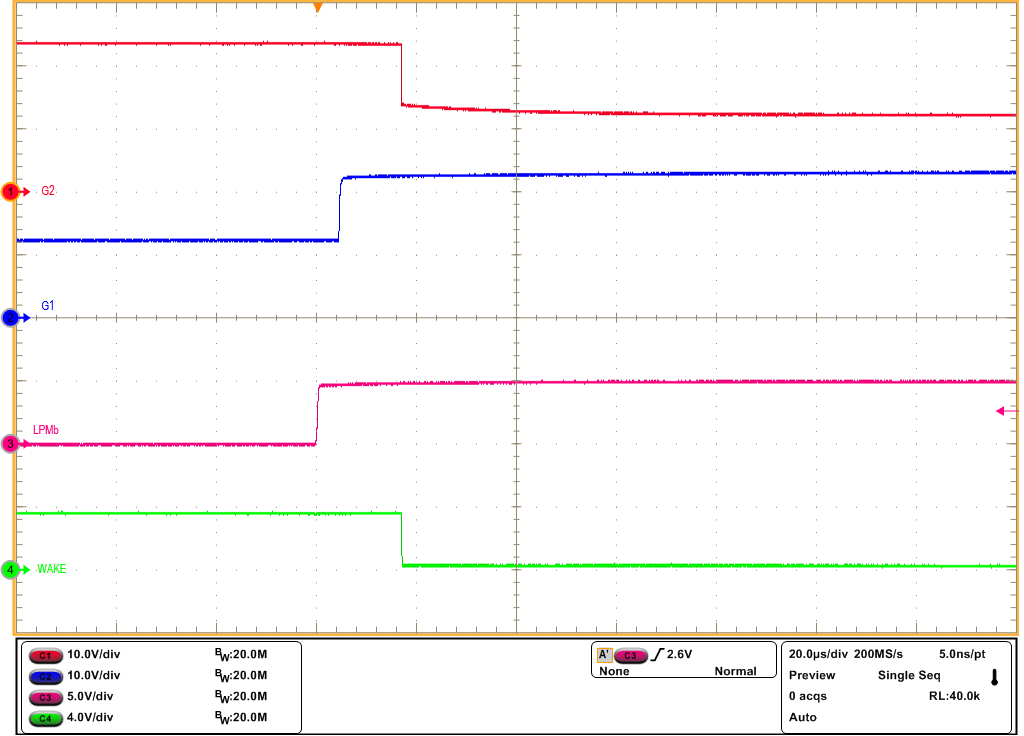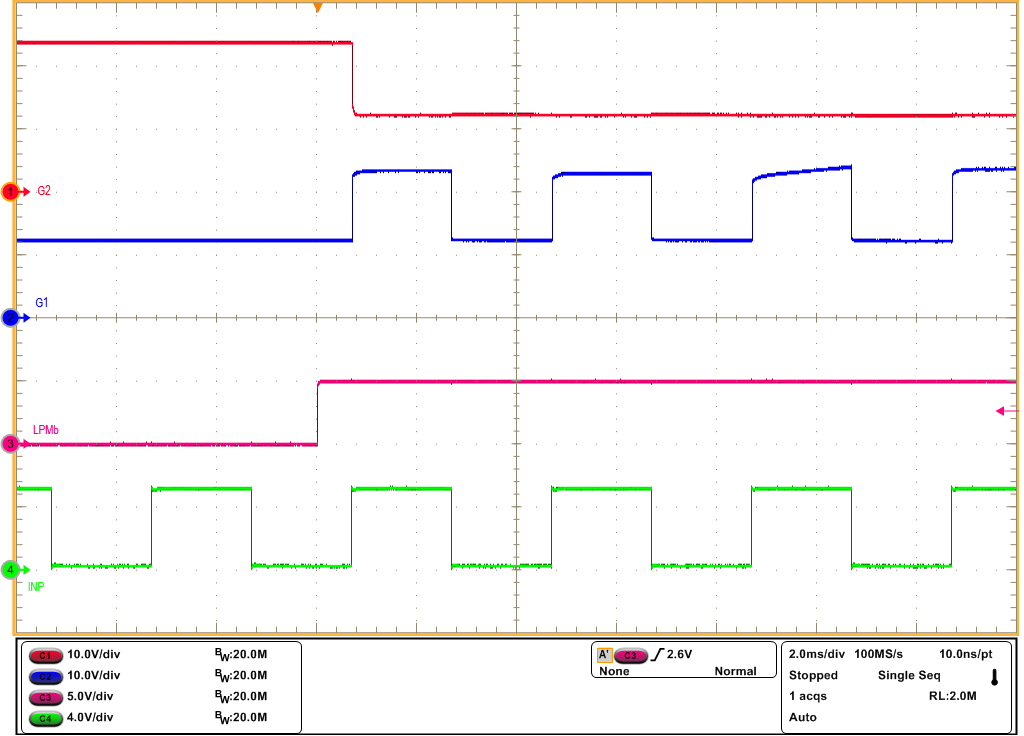SLUUCV7 December 2023 TPS1213-Q1
3.1.3 State Transition (LPM to Active Mode with LPMb Trigger)
Use the following instructions to verify state transition of TPS12130-Q1 with LPMb trigger.
- Apply 12 V at the input of the EVM at no-load.
- Enable the EN/UVLO to HIGH.
- Now, make LPMb from LOW to HIGH to see the state transition from LPM to active mode.
 Figure 3-6 State Transition from LPM to Active Mode (LPMb
= Low to High, VIN= 12 V, No-load)
Figure 3-6 State Transition from LPM to Active Mode (LPMb
= Low to High, VIN= 12 V, No-load) Figure 3-7 With LPMb = Low to High, INP Gained Control on
G1 (VIN= 12 V, No-load)
Figure 3-7 With LPMb = Low to High, INP Gained Control on
G1 (VIN= 12 V, No-load)